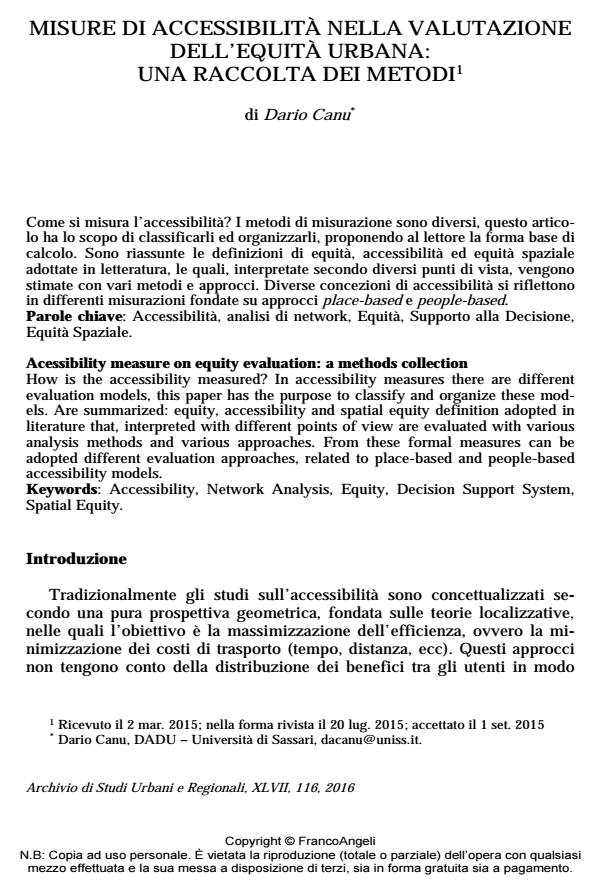Misure di accessibilità nella valutazione dell’equità urbana: una raccolta dei metodi
Titolo Rivista ARCHIVIO DI STUDI URBANI E REGIONALI
Autori/Curatori Dario Canu
Anno di pubblicazione 2016 Fascicolo 2016/116
Lingua Italiano Numero pagine 24 P. 115-138 Dimensione file 148 KB
DOI 10.3280/ASUR2016-116006
Il DOI è il codice a barre della proprietà intellettuale: per saperne di più
clicca qui
Qui sotto puoi vedere in anteprima la prima pagina di questo articolo.
Se questo articolo ti interessa, lo puoi acquistare (e scaricare in formato pdf) seguendo le facili indicazioni per acquistare il download credit. Acquista Download Credits per scaricare questo Articolo in formato PDF

FrancoAngeli è membro della Publishers International Linking Association, Inc (PILA)associazione indipendente e non profit per facilitare (attraverso i servizi tecnologici implementati da CrossRef.org) l’accesso degli studiosi ai contenuti digitali nelle pubblicazioni professionali e scientifiche
Come si misura l’accessibilità? I metodi di misurazione sono diversi, questo articolo ha lo scopo di classificarli ed organizzarli, proponendo al lettore la forma base di calcolo. Sono riassunte le definizioni di equità, accessibilità ed equità spaziale adottate in letteratura, le quali, interpretate secondo diversi punti di vista, vengono stimate con vari metodi e approcci. Diverse concezioni di accessibilità si riflettono in differenti misurazioni fondate su approcci place-based e people-based.
Parole chiave:Accessibilità, analisi di network, Equità, Supporto alla Decisione, Equità Spaziale
Dario Canu, Misure di accessibilità nella valutazione dell’equità urbana: una raccolta dei metodi in "ARCHIVIO DI STUDI URBANI E REGIONALI" 116/2016, pp 115-138, DOI: 10.3280/ASUR2016-116006